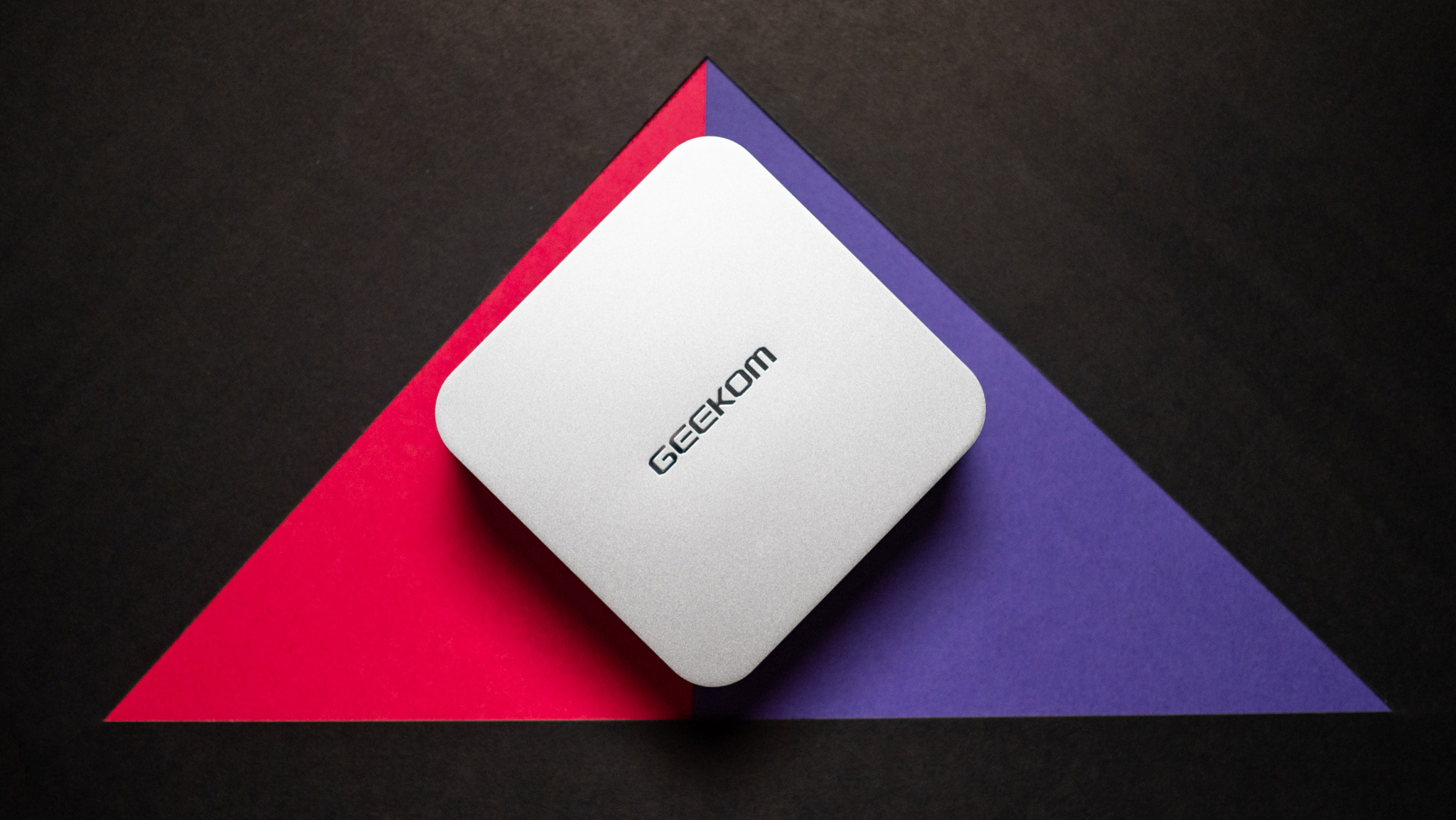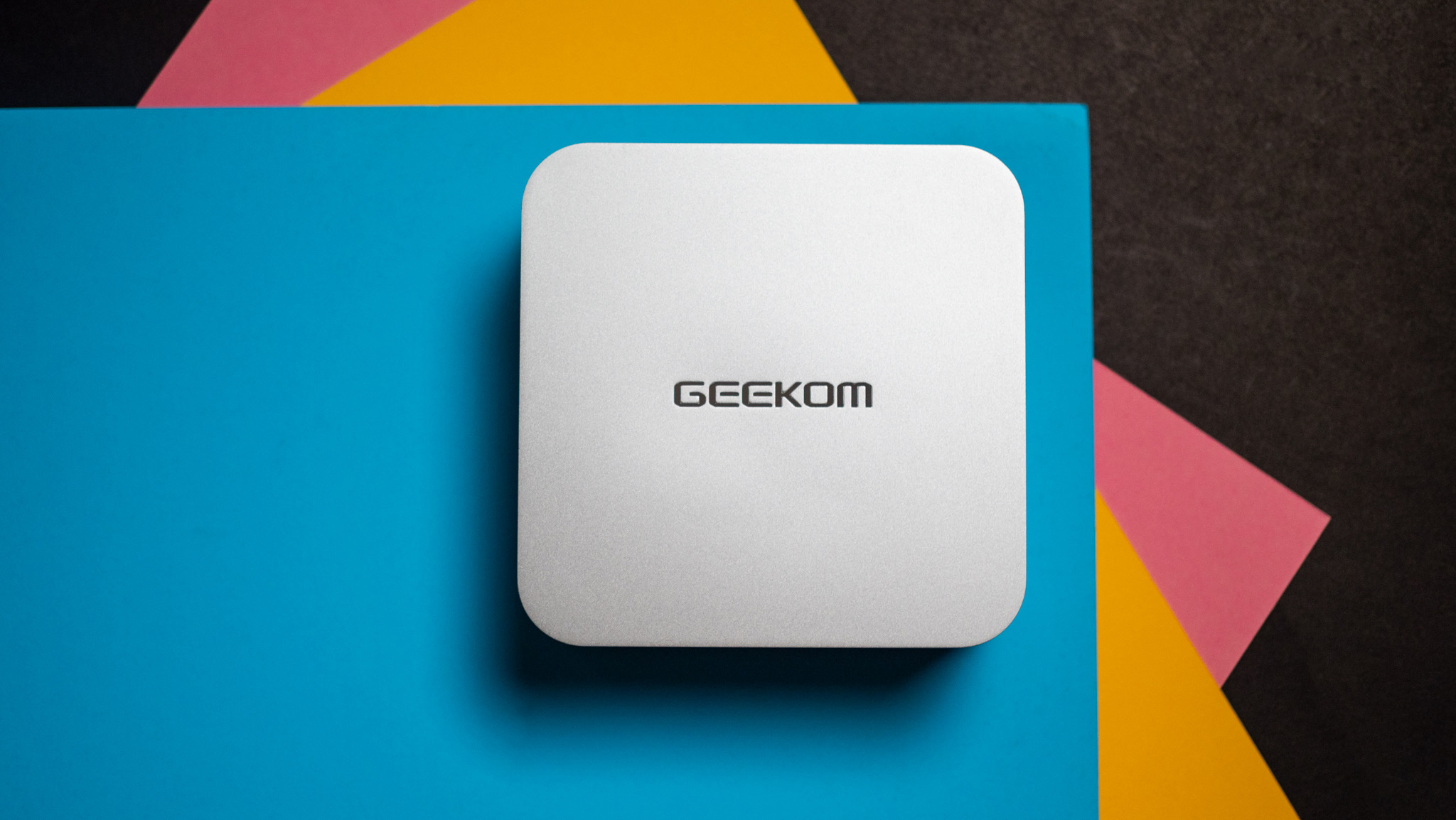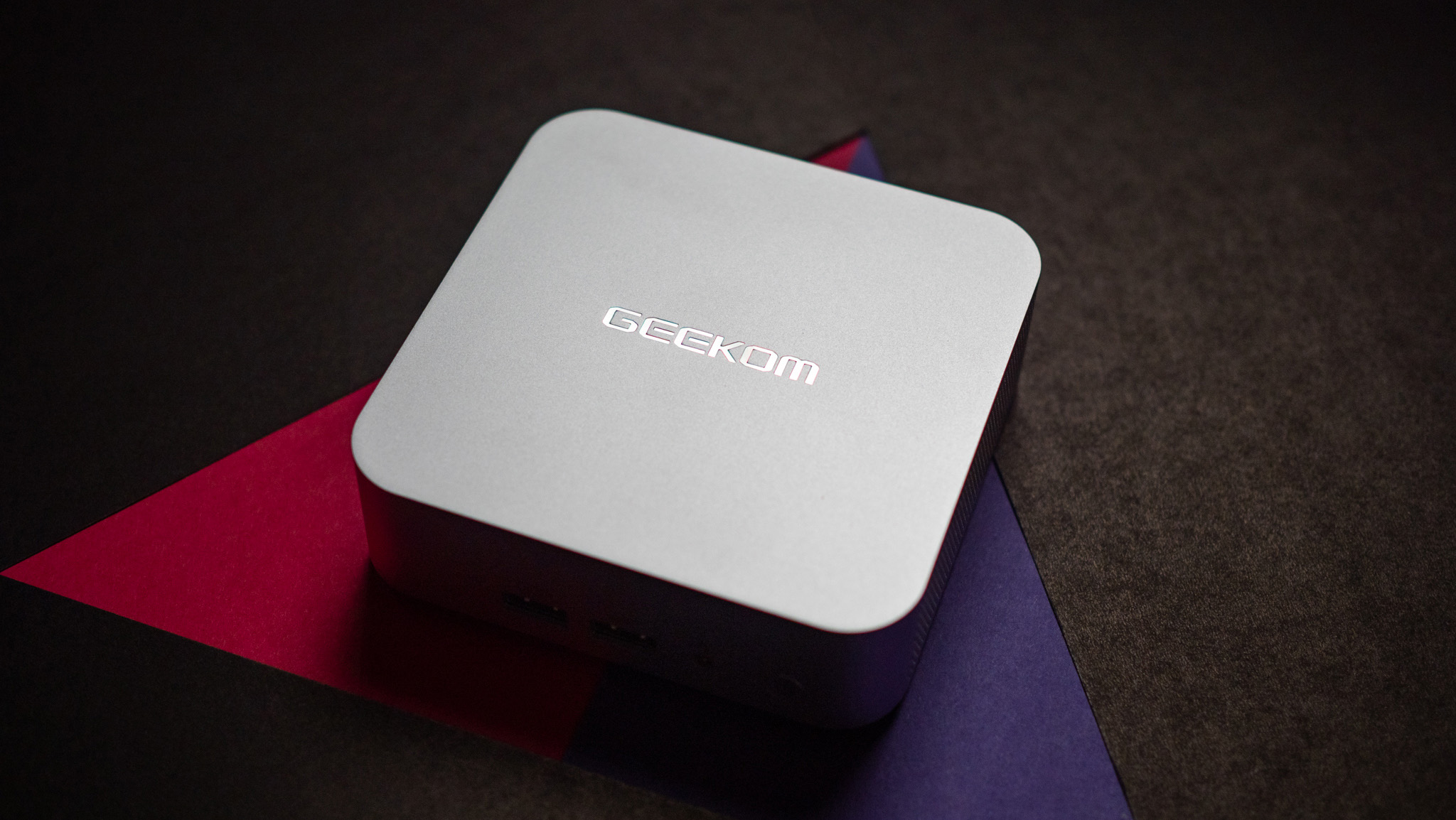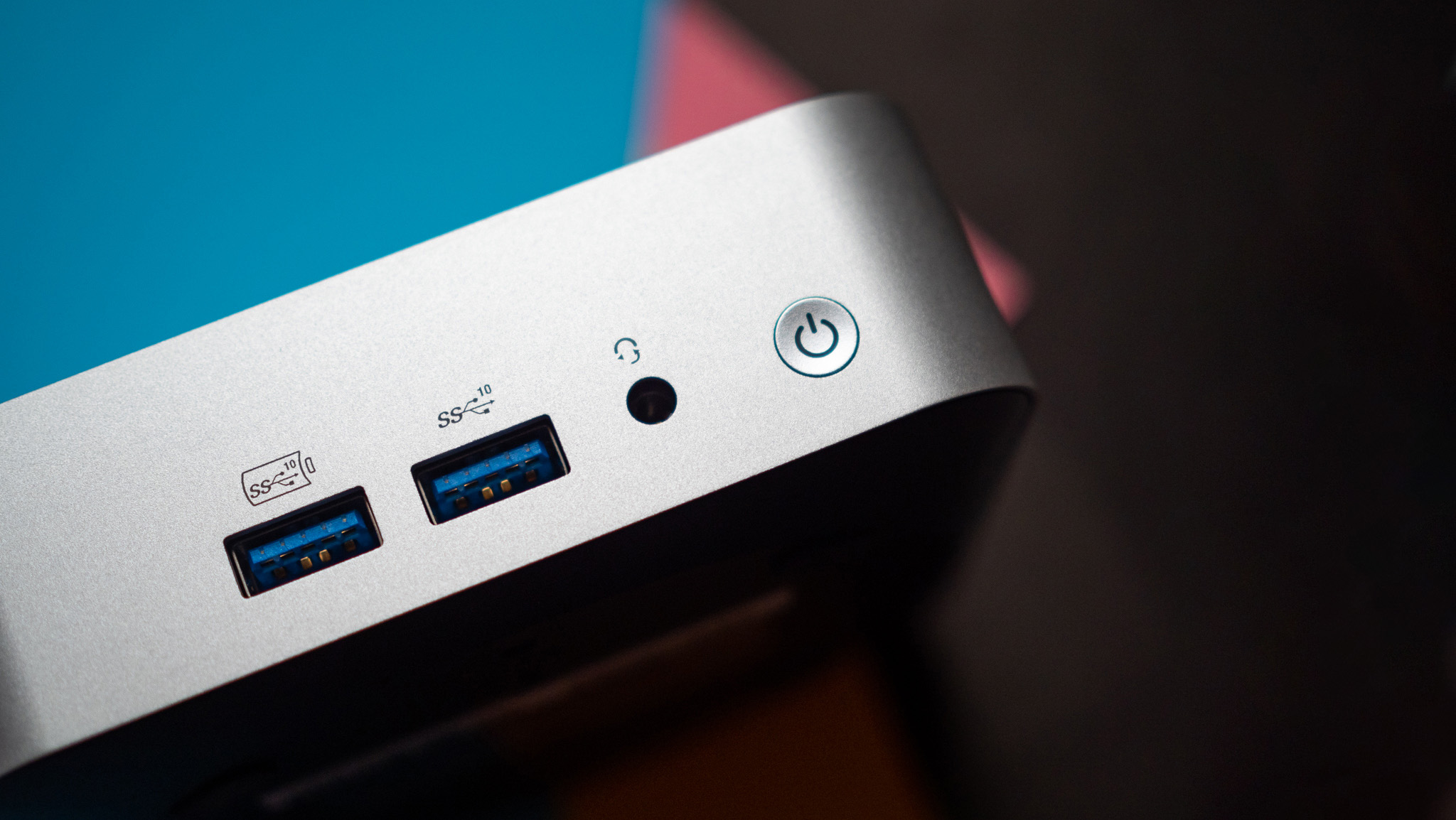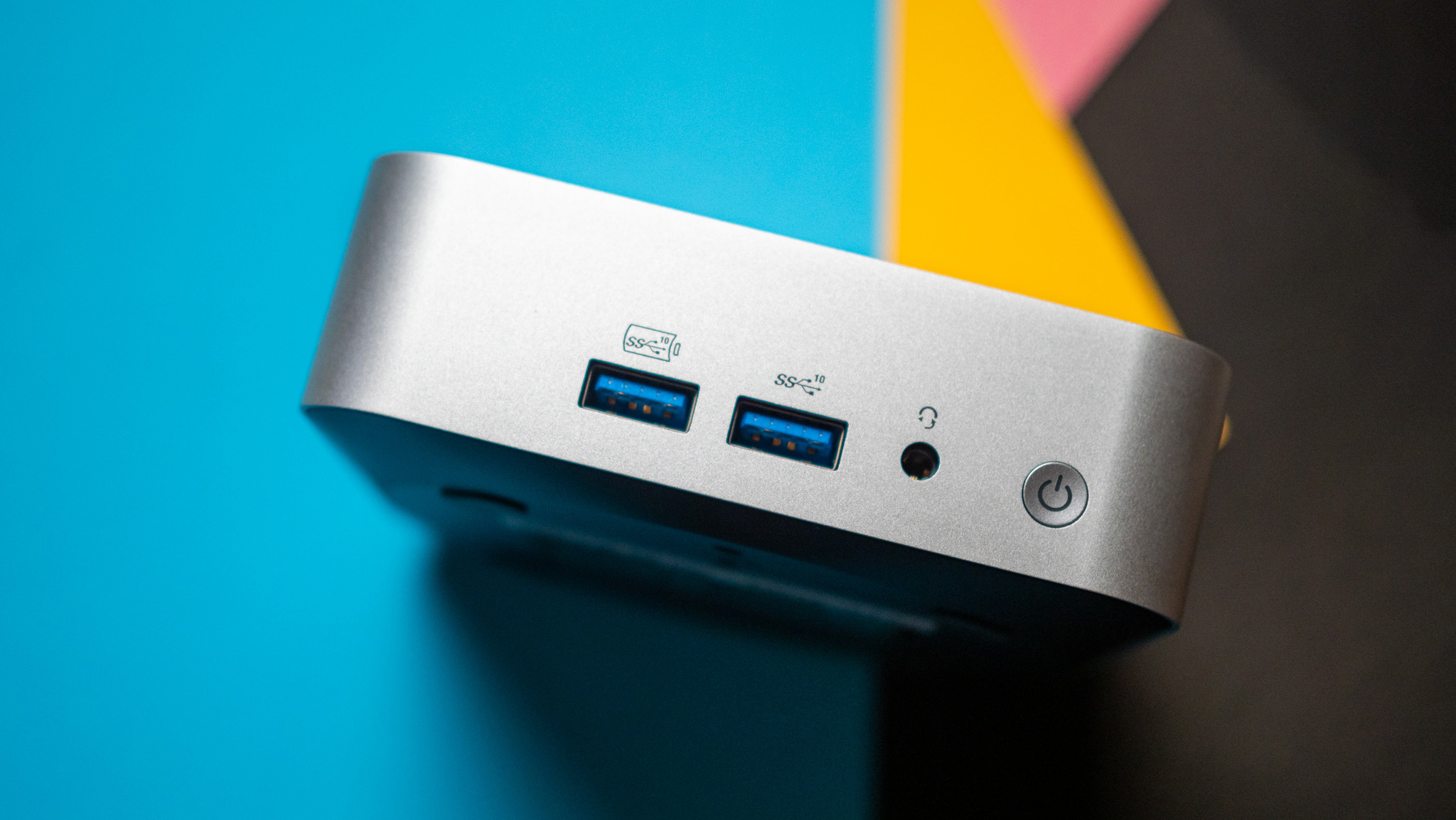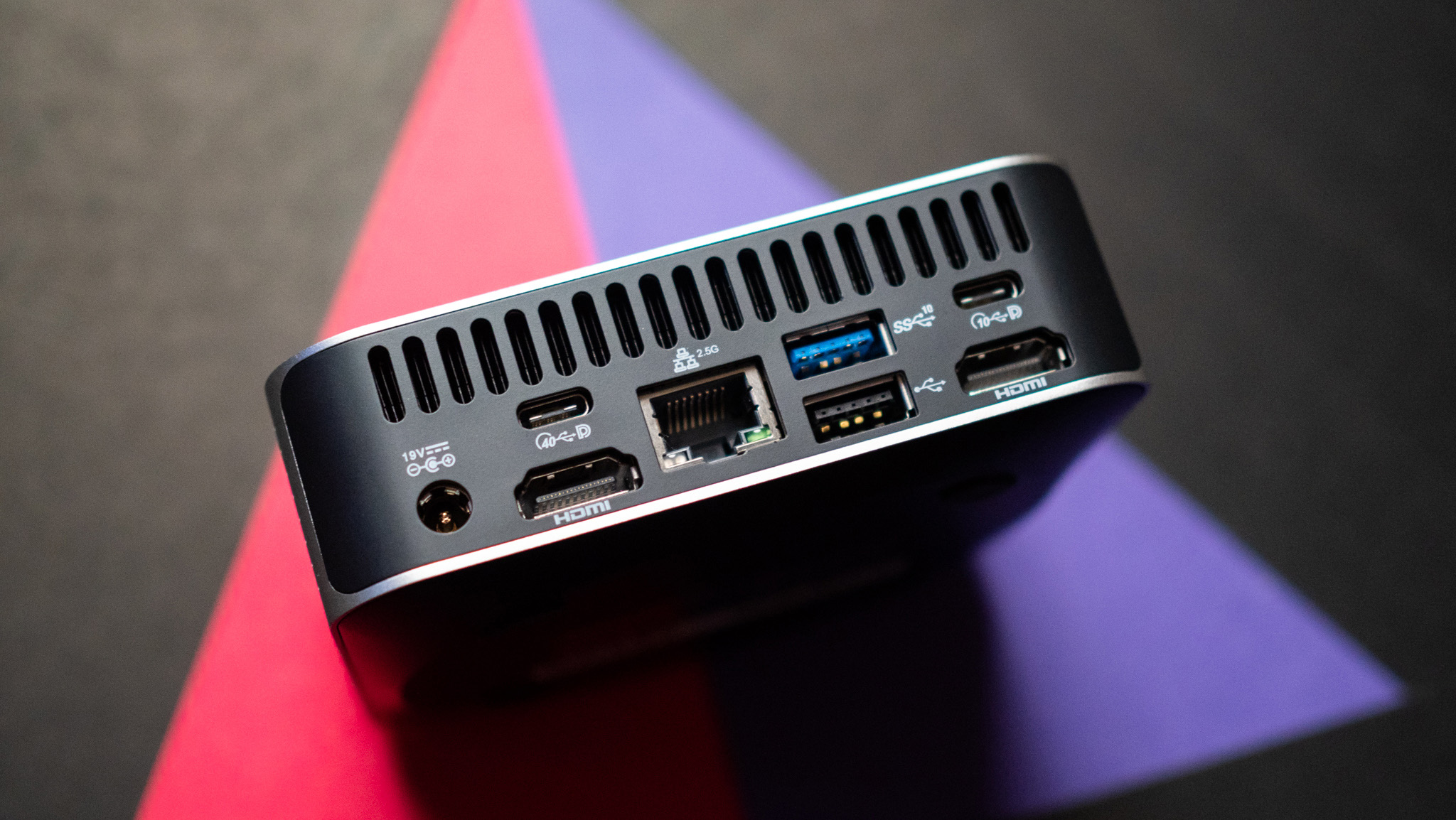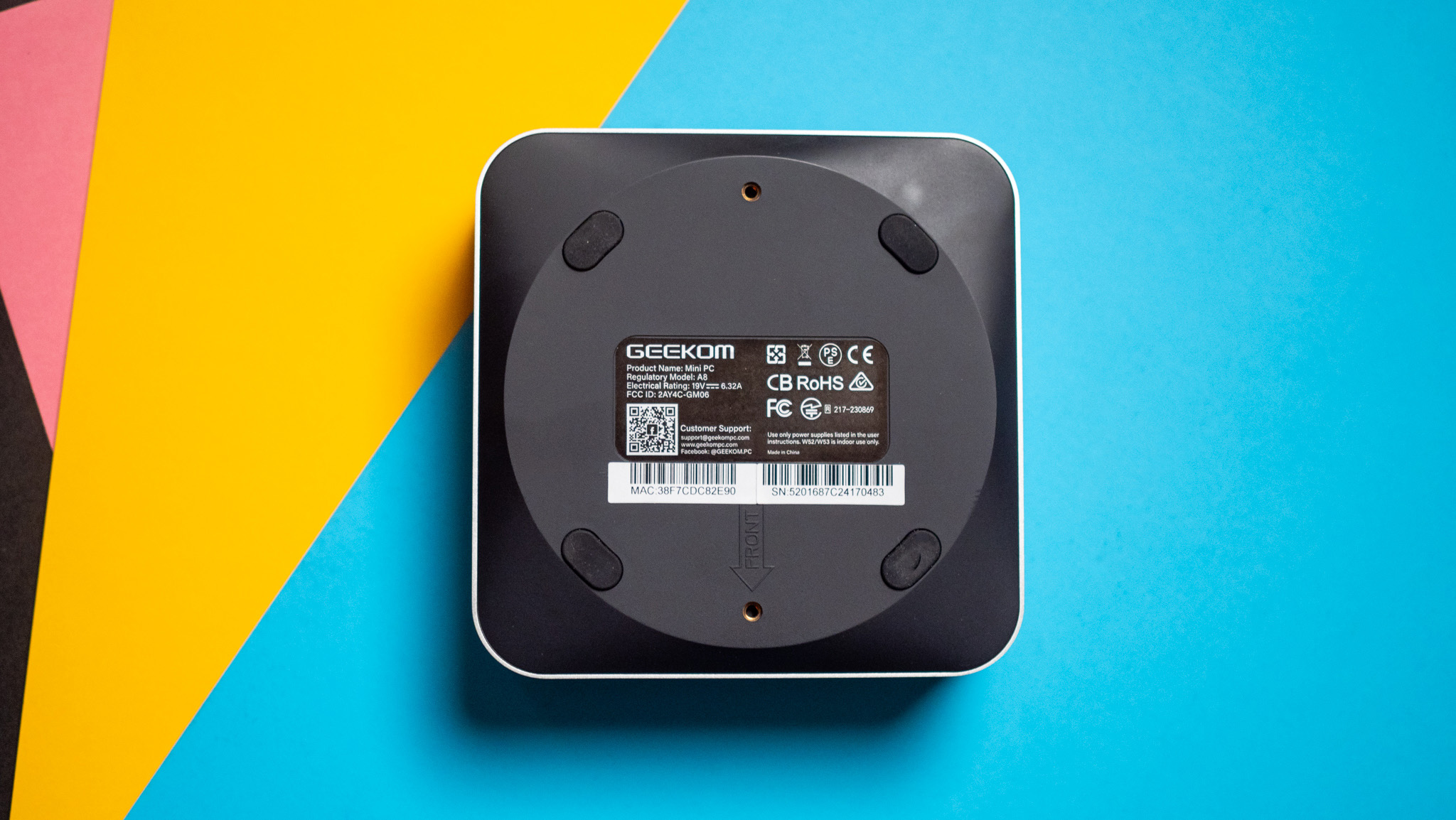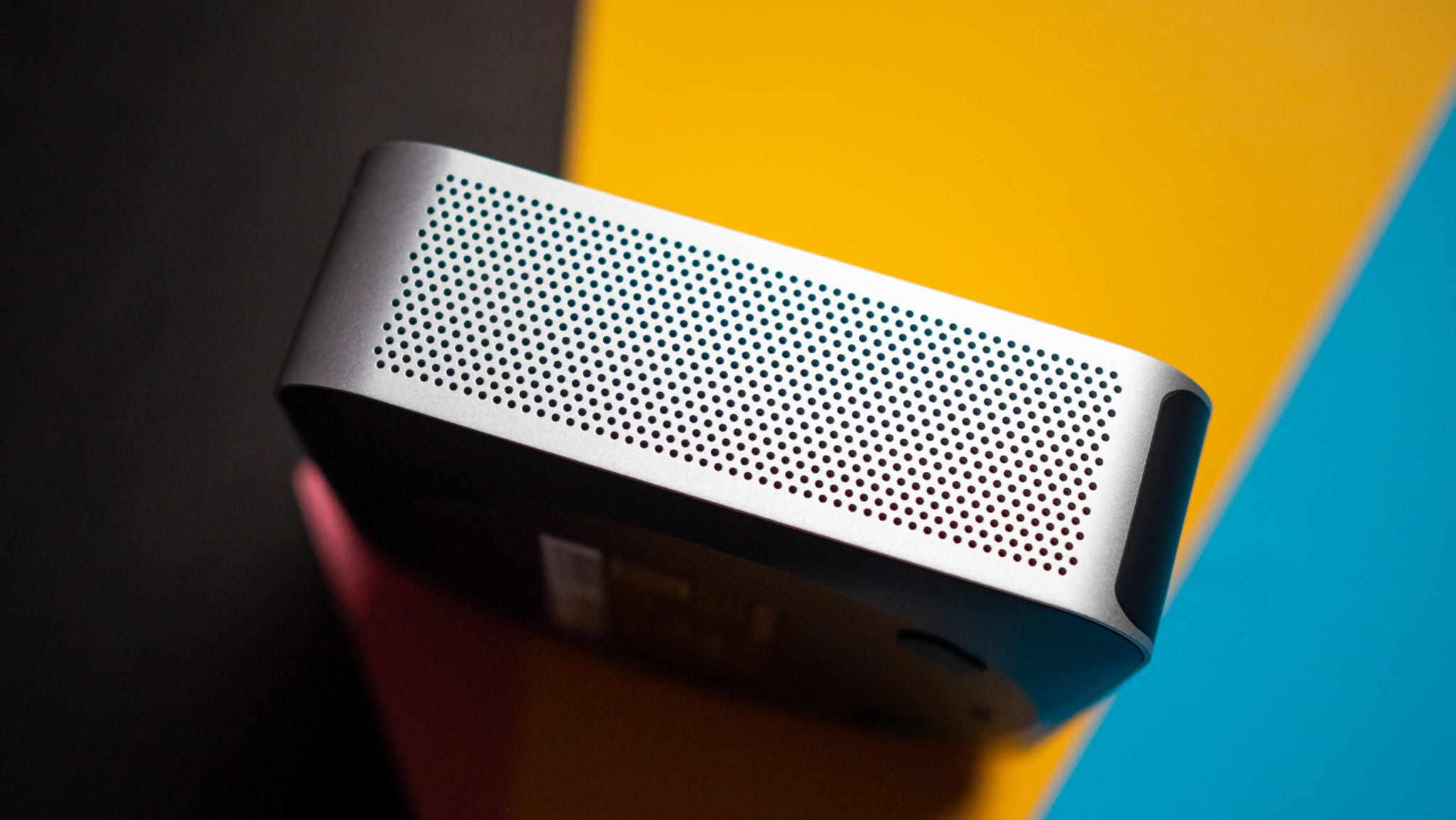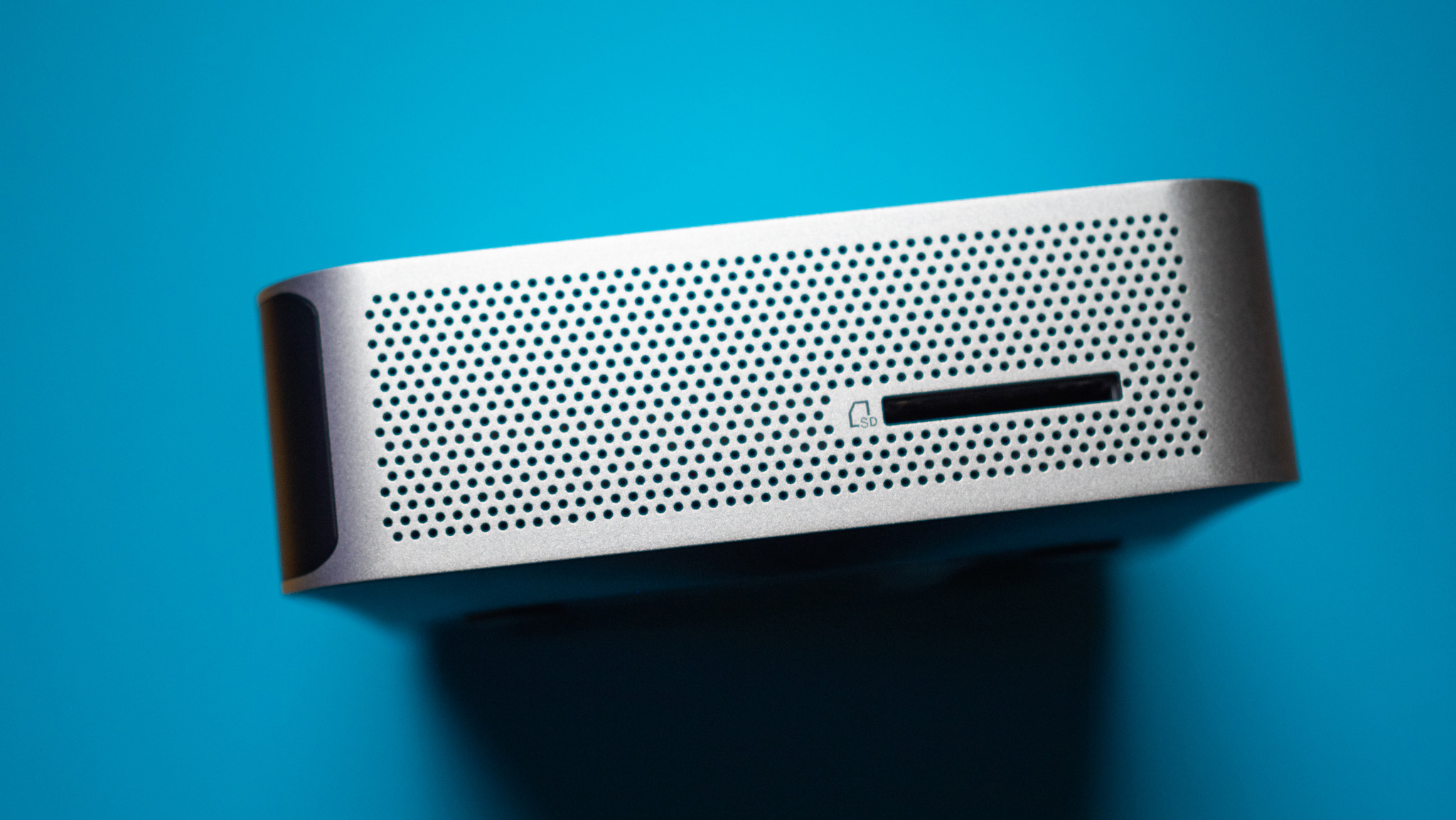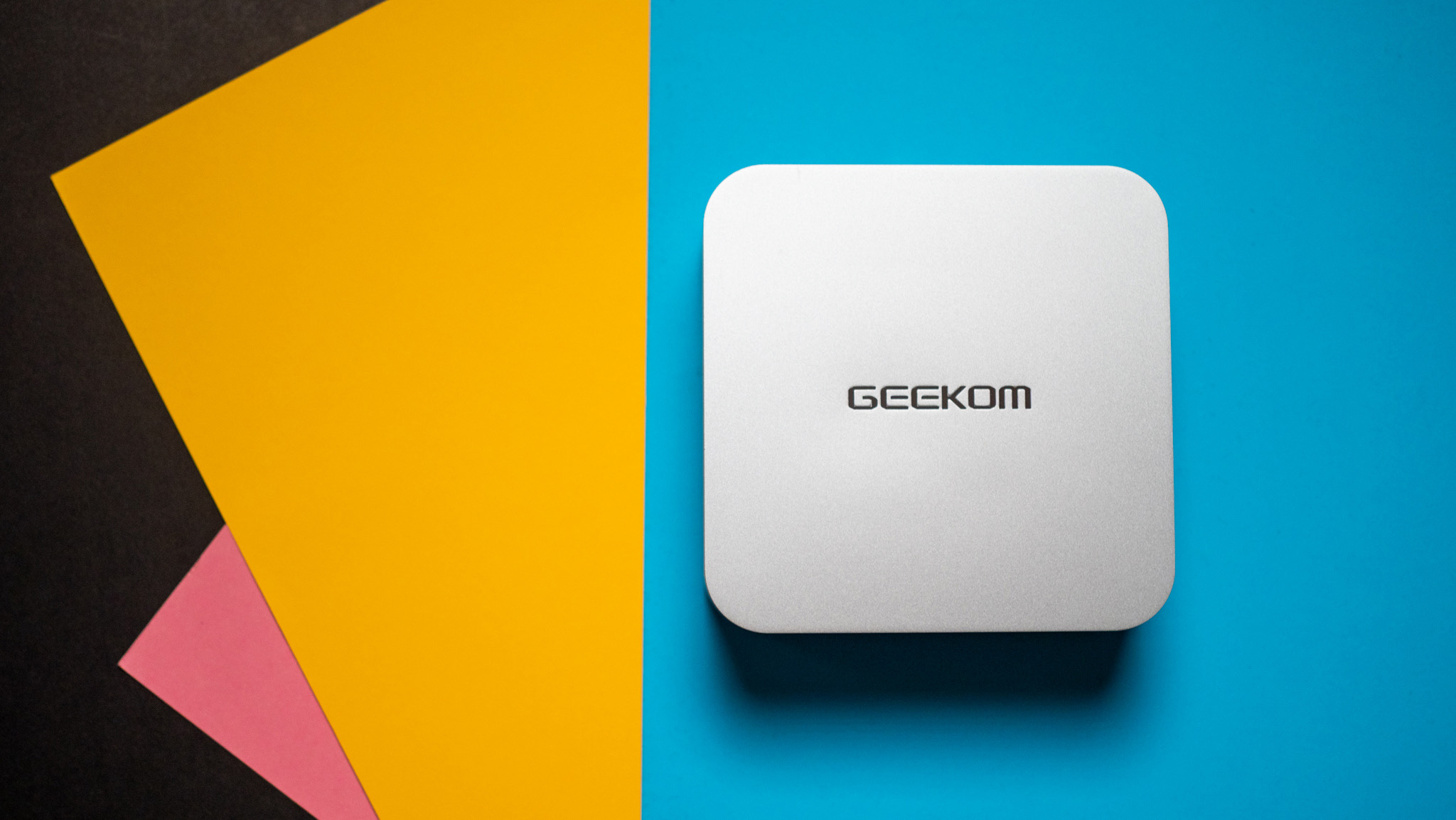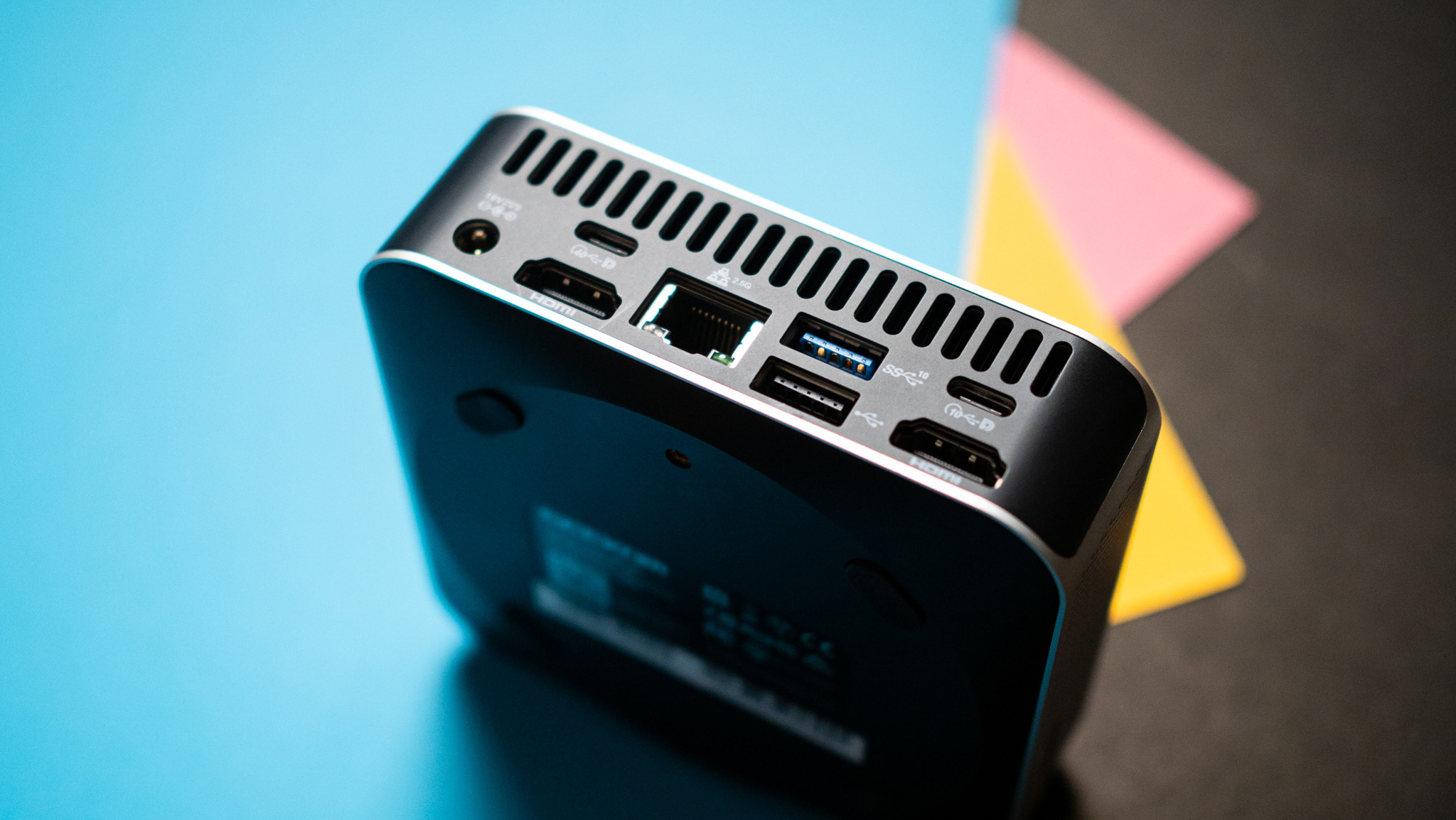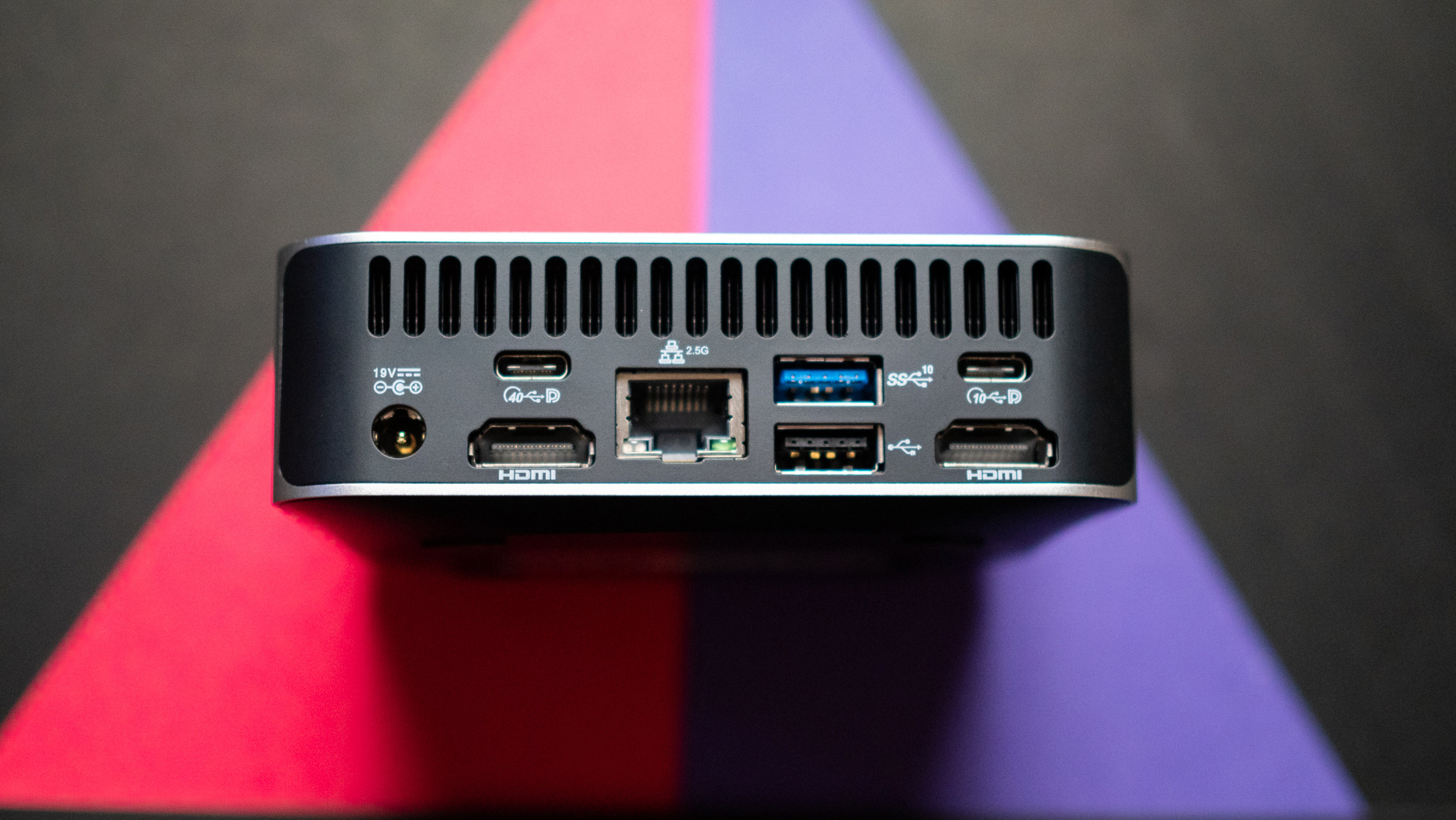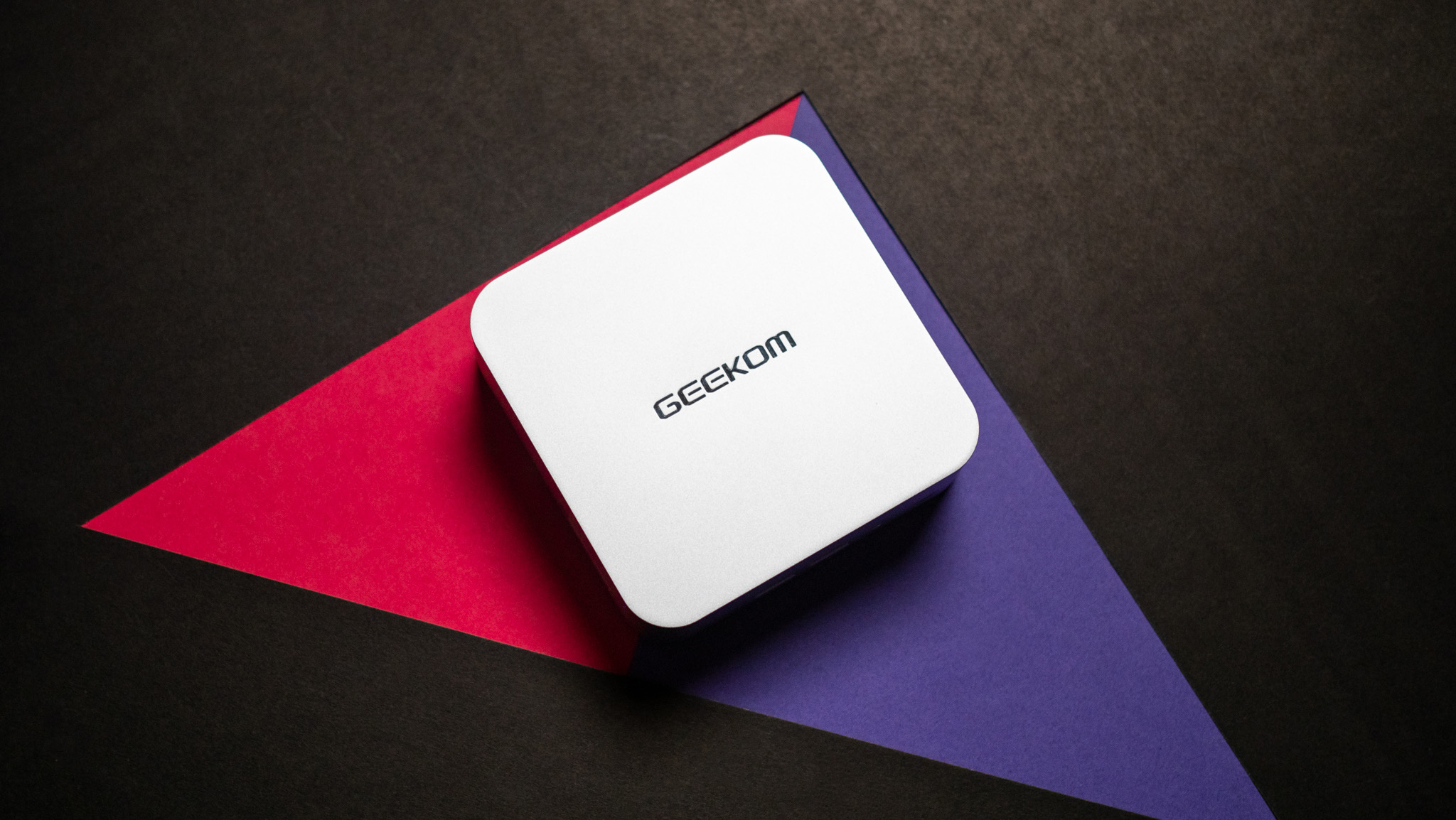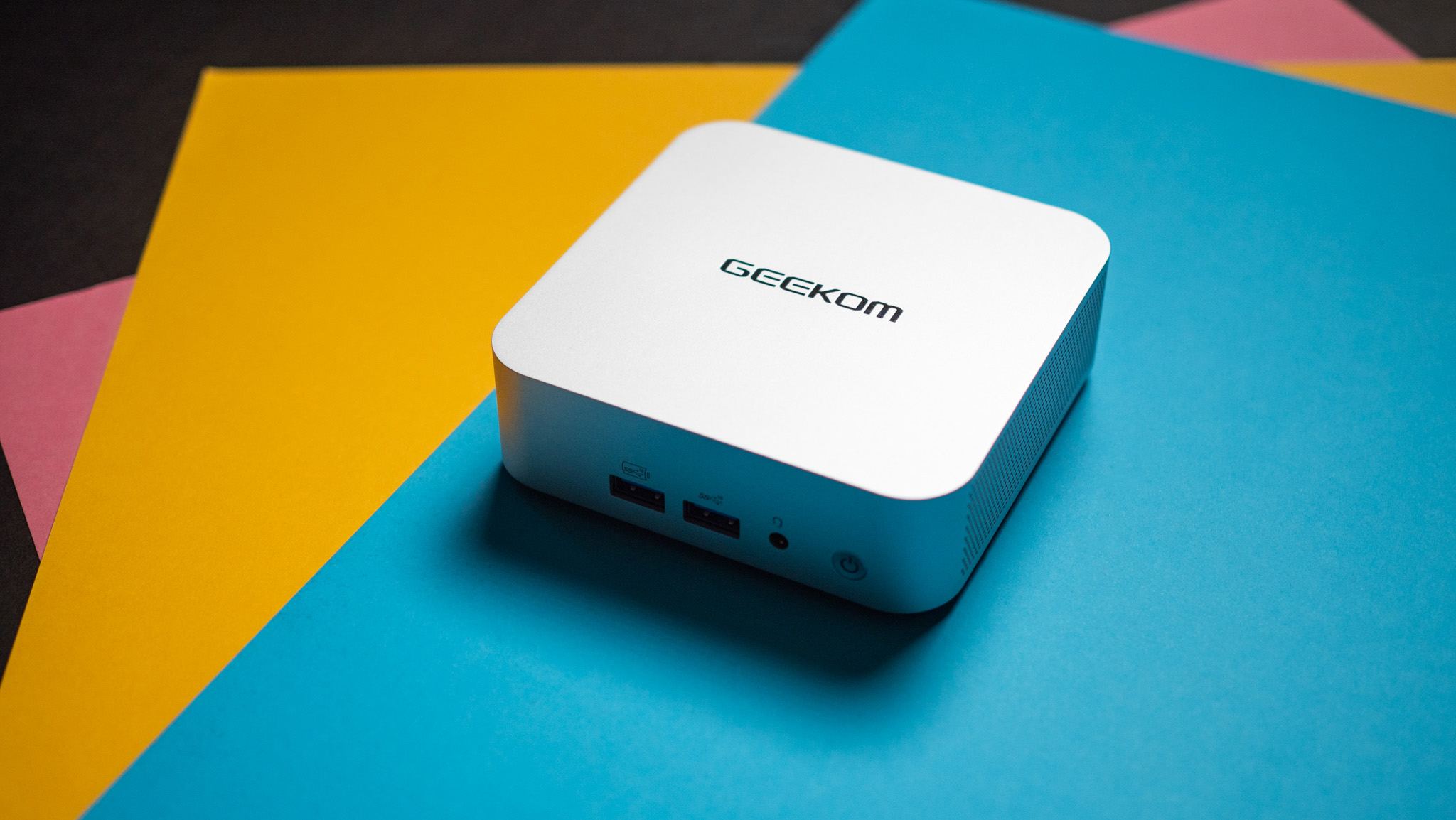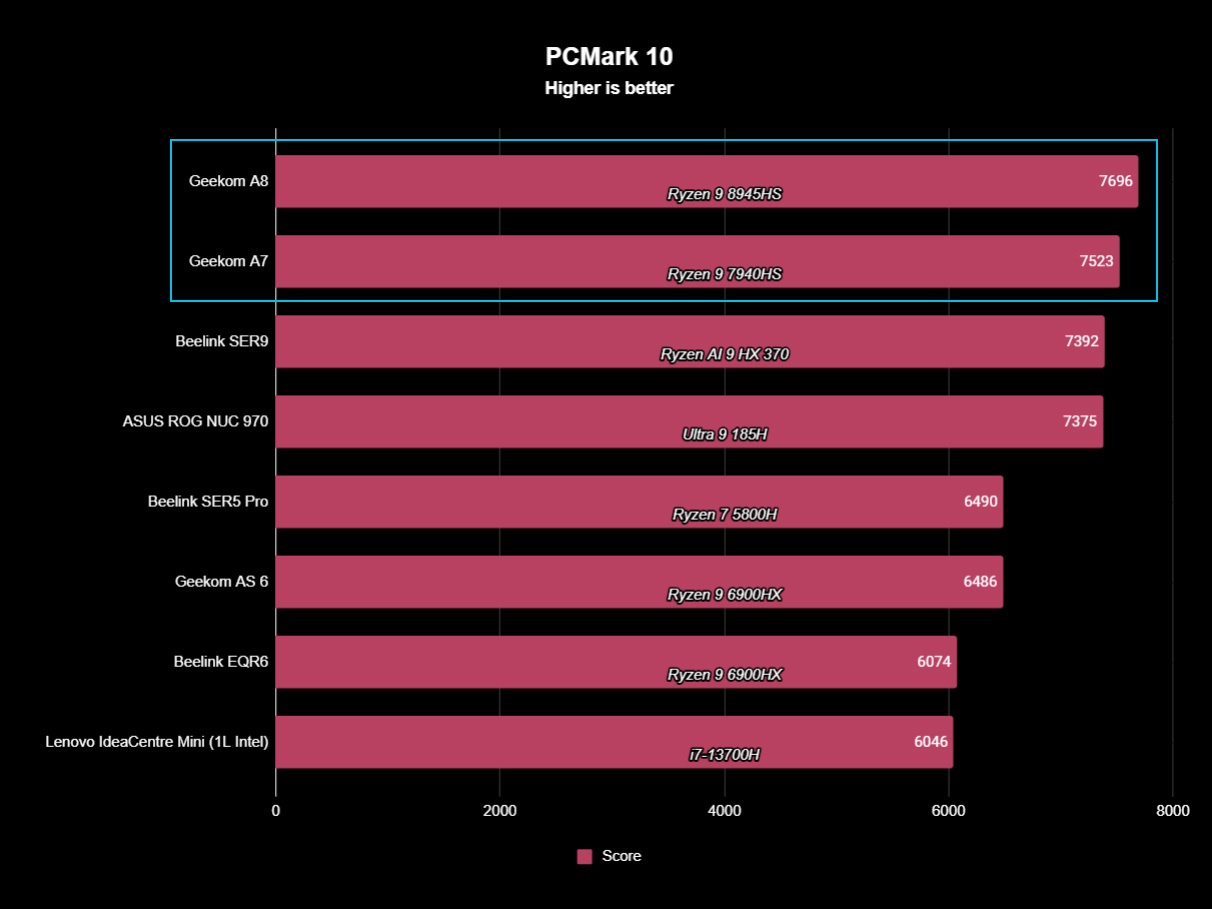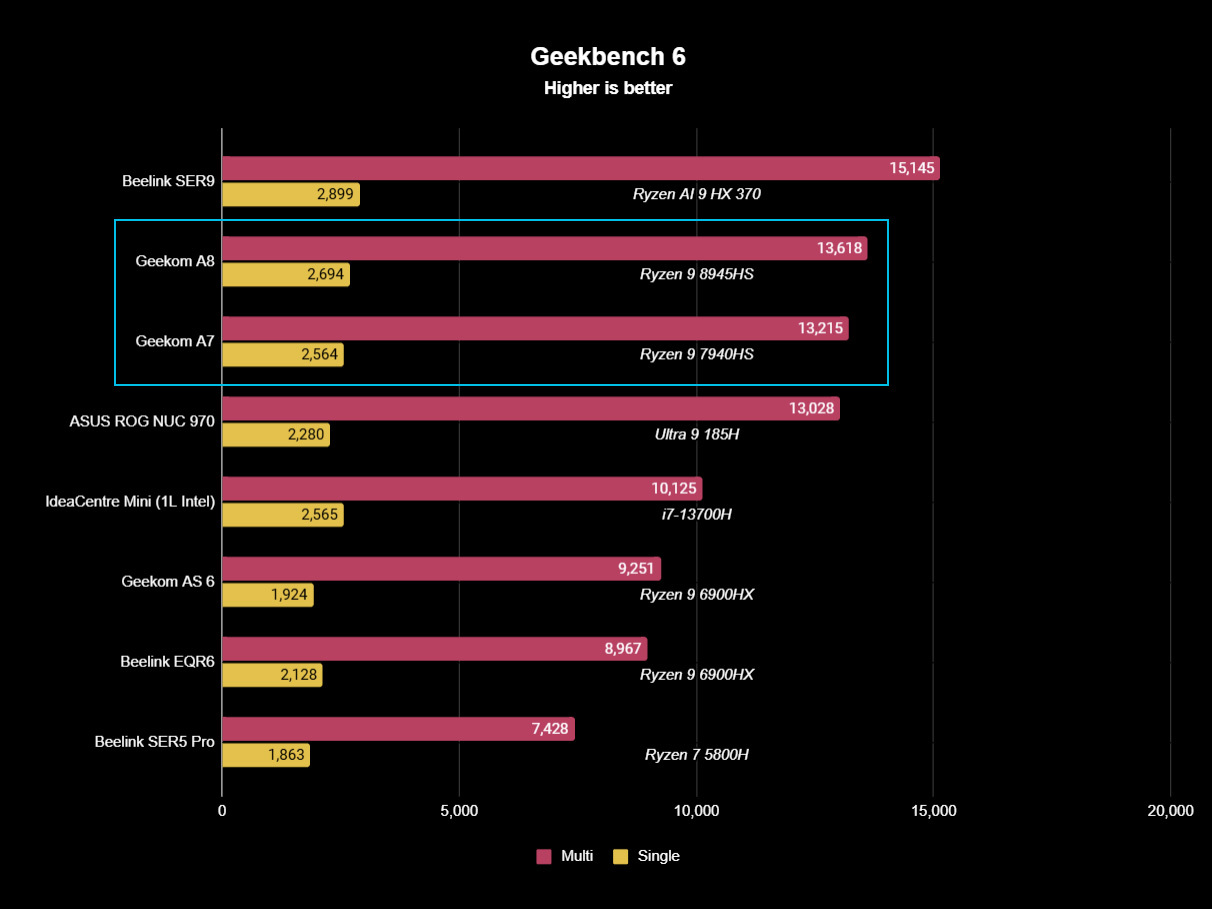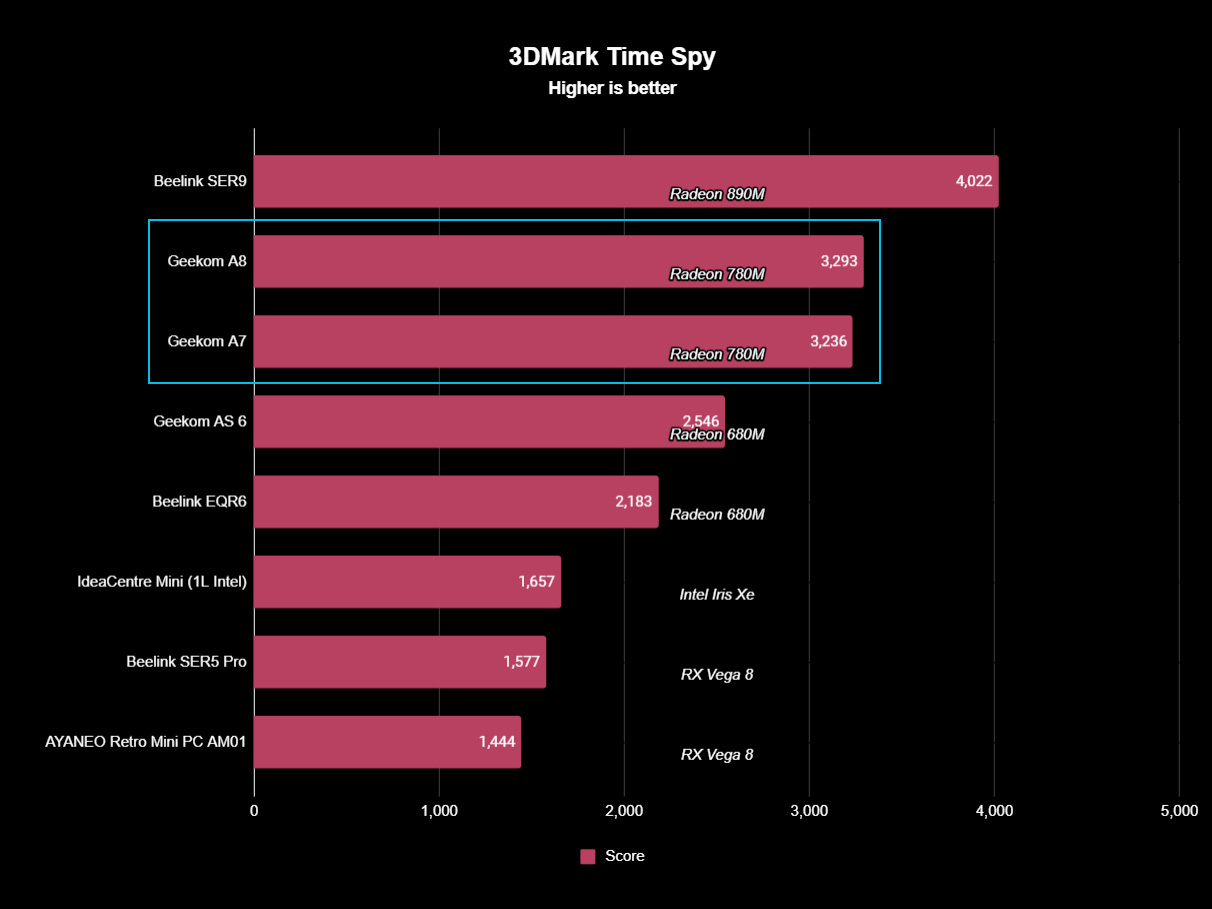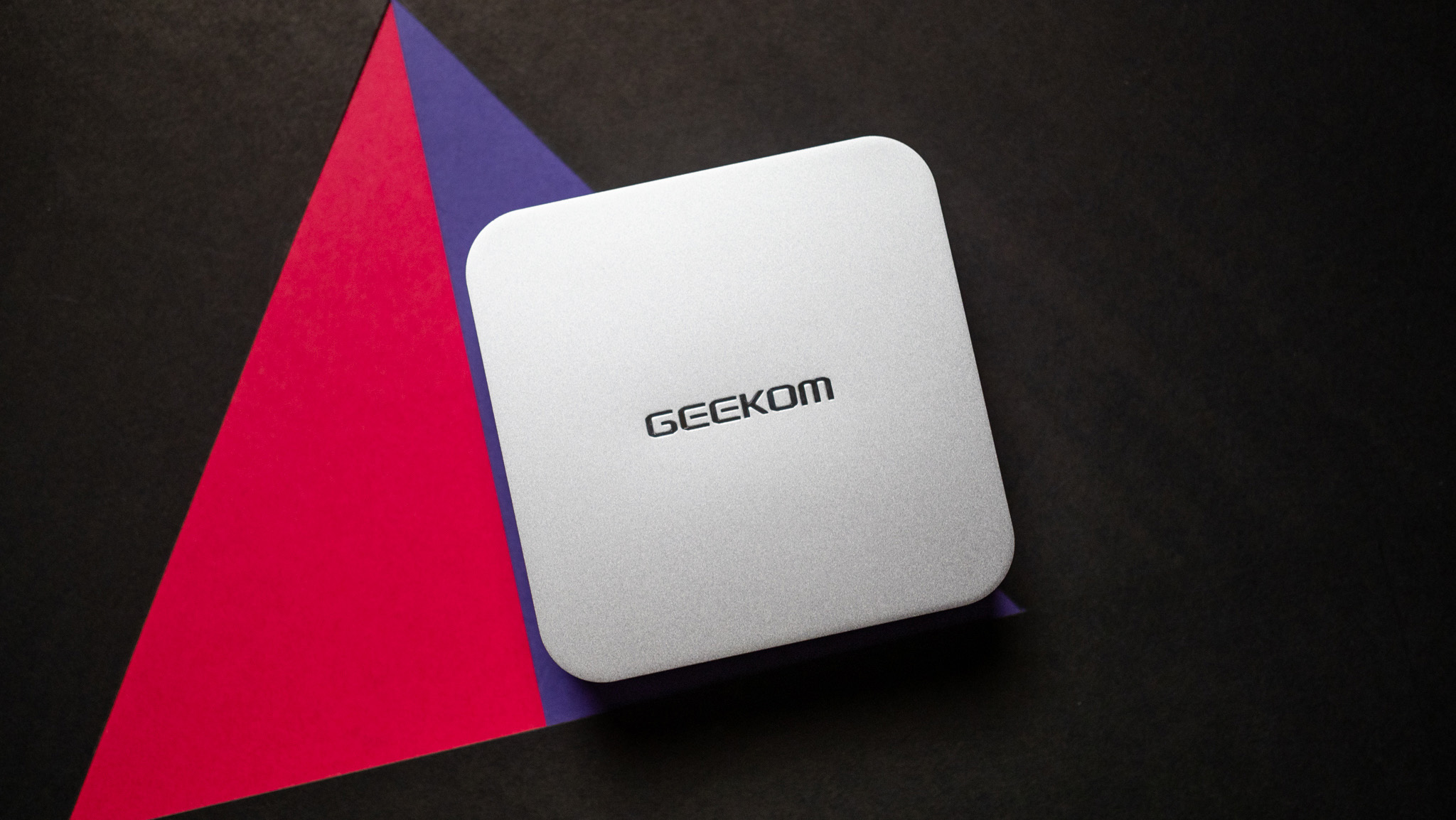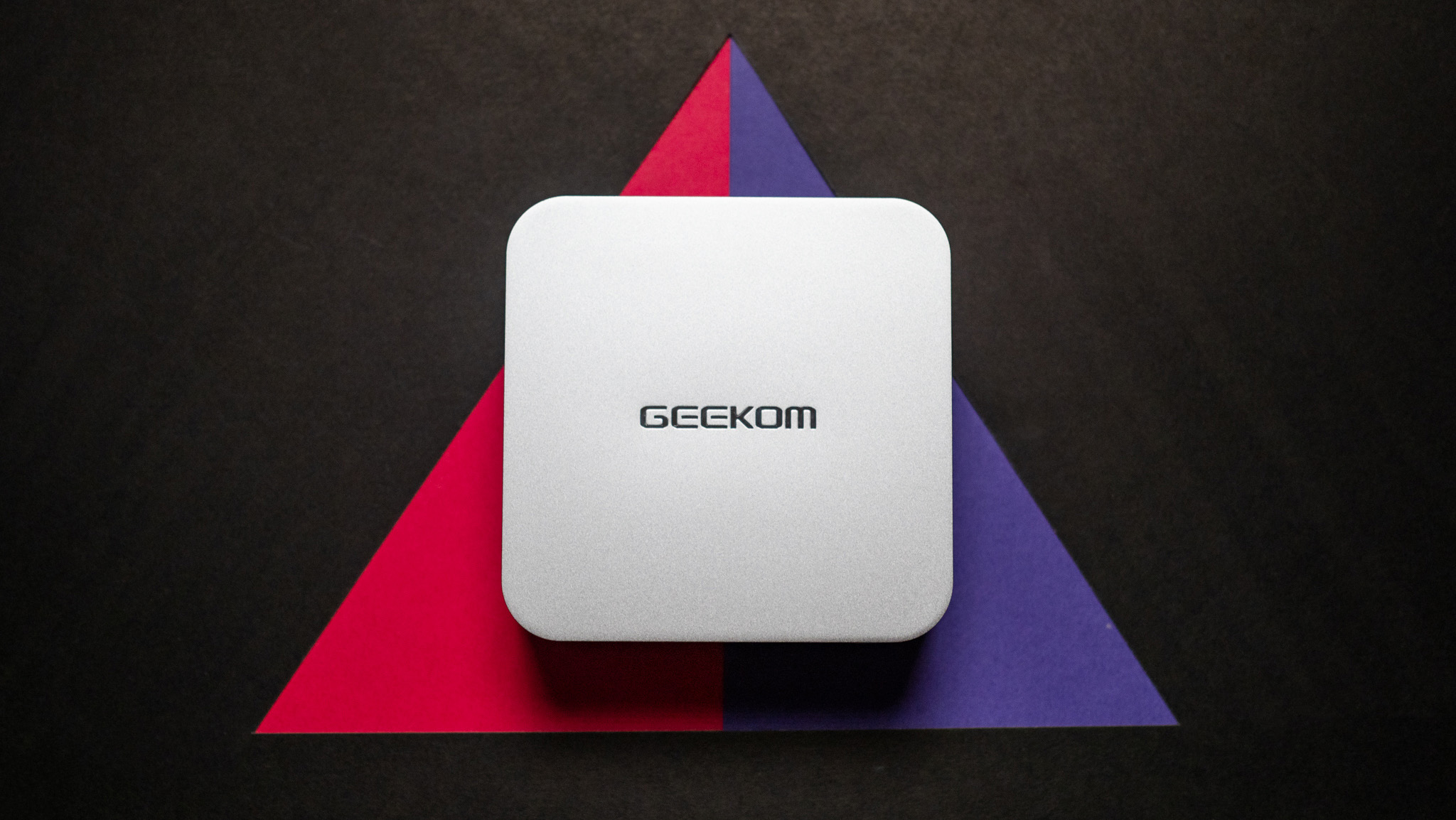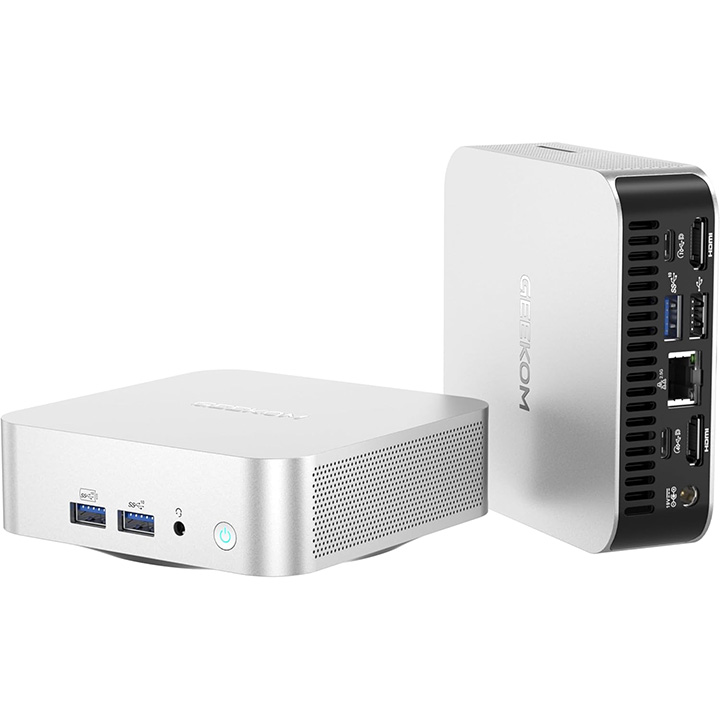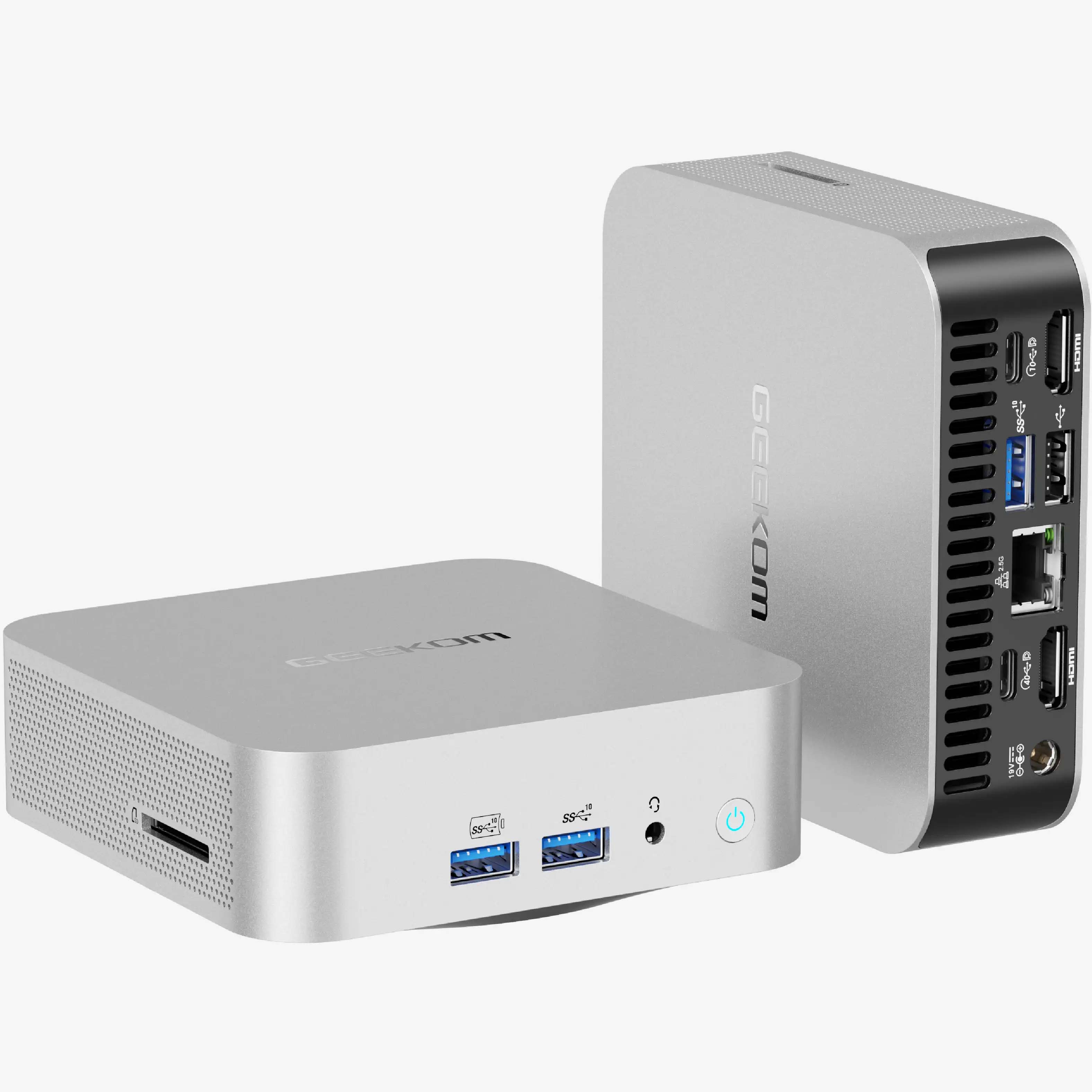Geekom knows what it’s doing in the mini-PC category, and the manufacturer managed to carve out a niche by offering powerful options at a good value. While most of Geekom’s portfolio consists of Intel-based models, the A7 and A8 stand out for their use of AMD designs.
Having used the Mini IT13 (review coming soon), XT12 Pro, and GT13 Pro in recent months, I can say with some confidence that the Ryzen-powered A7 and A8 are the fastest models that Geekom has to offer at the moment, and the Radeon 780M is astonishingly good at casual gaming.
There’s also a lot to like with the design, and while both models are on the costlier side — as far as Geekom products go — you still get great value when you consider the hardware you’re getting.
The A7 is powered by the Phoenix-based Ryzen 9 7940HS, with the A8 featuring the Hawk Point Ryzen 9 8945HS. If you need a mini-PC that doesn’t take up much room on your desk but still has plenty of power, the A8 should be at the top of your list, with the A7 a close second.
Geekom A8/A7: Pricing and availability
Geekom unveiled the A8 in May 2024, and the mini-PC is now available globally. You can pick it up for $849 from Geekom’s website in the U.S. and £899 on Geekom U.K., and it is also available on Amazon for $849. The configuration includes the Ryzen 9 8945HS, 32GB of RAM, and a 2TB SSD.
Windows Central readers get an additional 5% discount by using code WINDOWSA8 when picking up the A8 — the code is valid on both Geekom’s website as well as Amazon and is valid until November 30. There’s also a Ryzen 7-based model of the A8 that features the R7-8845HS along with the same 32GB of RAM and 2TB SSD, and that model is $699 as of writing.
The Geekom A7 is sold in a single configuration with the Ryzen 9 7940HS, 32GB of RAM, and a 2TB SSD, and it costs $749 on Geekom’s site in the U.S. and £749 in the U.K., and you can get it on Amazon for $749. Similar to the A8, Windows Central readers are eligible to get a 5% discount by using WINDOWSA7 when picking up the product at Geekom’s site or Amazon, and the code is valid until November 30.
Geekom A8/A7: Design
Geekom likes switching up the design of its products on a regular basis, and that’s no different with the A7 and A8. Both models feature an aluminum-alloy chassis, and the design is clean and looks modern — much more so than the Mini IT11 and Mini IT13 that came out last year.
The A8 is also smaller than earlier models released by Geekom; it’s about roughly half the size of a normal router, and at 450g, it doesn’t weigh much either. There are rubber feet at the bottom that ensure the mini-PC stays planted on a desk, and the design is vented on both sides to deliver decent passive airflow.
The only issue with the design is that the screws to access the internal hardware are located underneath the rubber feet, so you’ll have to dislodge the feet (which are held to the chassis by adhesive) before you can get to the screws. This isn’t as convenient to access as previous models, with Geekom clearly prioritizing the overall aesthetics in lieu of accessibility.
There’s a solitary fan inside the chassis that provides active cooling, and it does a decent enough job. There is audible noise under load, but I only noticed it when running synthetic tests; there aren’t any issues in this area in day-to-day use.
When it comes to portability, the smaller size and heft make it a better choice than anything else in Geekom’s portfolio, and that’s one of the main reasons why I decided to take the A7 with me on the road recently.
Geekom A8/A7: Ports and connectivity
The A7 and A8 have the same set of ports, and there’s plenty to like in this area. You get two USB-A ports at the front that use the USB 3.2 Gen 2 standard and a 3.5mm jack. Other than that, there’s just a power button that lights up when the mini-PC is in use.
At the back, you get dual USB-A ports — one on the USB 3.2 Gen 2 standard and the other using USB 2.0 — alongside a USB-C port based on USB 4 Gen 3 and a USB-C port on the USB 3.2 Gen 2 standard.
There are dual HDMI 2.0 ports, 2.5 Gigabit Ethernet connectivity, a standard barrel plug, and an SD card reader to the left. Continuing with connectivity, you get Wi-Fi 6e and Bluetooth 5.2, and while the Wi-Fi signal isn’t as strong as other devices I tested, I got a reliable signal and decent bandwidth in the month I used the A8 and A7.
Internal connectivity includes a single M.2 2280 slot that’s taken up by the pre-installed Gen 4.0 SSD. Earlier Geekom models had the provision to add a second SSD, but that isn’t possible with the A7 and A8.
When it comes to memory, you get dual-channel DDR5 SODIMM slots, with each featuring a 16GB module — you can easily switch these out to add 32GB modules to increase the memory to 64GB should you need to do so.
What’s different with the Geekom A7?
The A7 is indistinguishable from the A8 in terms of design, with both models featuring the same aluminum chassis. You get the same set of ports as well, and they’re the same weight. The only difference is on the inside, with the A7 powered by the Phoenix-class R9 7940HS instead.
Even then, the difference in daily use is barely noticeable, and in all the synthetic benchmarks I ran, there was less than a 5% differential between both products. If anything, I ended up using the A7 more than the A8. If you want to save some extra cash, the A7 is a terrific choice.
Geekom A8/A7: Performance
Before we get to the performance, a note on the software: both the A7 and A8 come with Windows 11 Pro (23H2) pre-installed, and other than the usual Microsoft utilities, you don’t get any bloatware. I didn’t see any issues on the software side of things, and Geekom did the right thing by not bundling any extraneous utilities.
The A8 is powered by the Ryzen 9 8945HS, which has eight cores, 16 threads, and a 5.2GHz boost and base 4.0GHz clocks. It comes with an 8MB L2 cache and 16MB L3 cache, and a 45W TDP with adjustable power limits, with PL1 at 45W and PL2 going up to 65W.
In my usage, I saw a maximum of 91W power draw out of the A8 as a whole under load, and that’s in line with mini-PC systems in general. The A8 has a 120W power brick, and Geekom now uses a standardized design across all of its products.
Where the A8 truly comes into its own is the performance — the mini-PC is the best that Geekom has to offer right now, and it handles demanding tasks with relative ease. It has the best single- and multi-core scores of any mini-PC I used, and it does a passable job at gaming, provided the title isn’t too visually demanding.
Mundane tasks like browsing and productivity tasks are handled without any issues, and the A8 proved to be capable of image and video editing. In the month I tested the A8, I didn’t see any slowdowns or issues while color grading images in Lightroom, editing in Photoshop, or putting together videos in Premiere Pro.
Geekom A8/A7: The alternatives
Geekom has an extensive catalog available, and the GT13 Pro is a decent alternative to the A7 and A8. If you need the same Ryzen-based hardware instead, the Minisforum HX77G is a good choice; it includes the Ryzen 9 7940HS, 32GB of RAM, and a 1TB SSD, and it costs $799. You get better thermal management and dual SSD slots, but the design isn’t as portable.
Geekom A8/A7: Should you buy it?
You should buy this if..
✅ You need a powerful mini-PC that doesn’t take up much room
✅ You want decent connectivity and an SD card reader
✅ You want a mini-PC that can run casual games without any hassle
You shouldn’t buy this if..
❌ You need two M.2 SSD slots
Having used the A7 and A8 extensively, the only limitation I can think of is that they have a solitary M.2 slot. There isn’t much else that is missing on either model, and they both deliver standout performance in day-to-day productivity tasks as well as demanding image and video editing workflows.
The portable design is a decent differentiator, and both the A7 and A8 are among the most diminutive products in this category. The issue with the size is that it affects thermal management, and Geekom should really consider increasing the height so it can slot in a bigger fan in the next generation.
Thankfully, I didn’t see any issues with throttling, and it was only in gaming or demanding tasks that the fan kicked into high gear and became audible. Considering the connectivity you’re getting and the performance potential on offer, the A7 and A8 are among the best mini-PCs you can get today — Geekom or otherwise.
The A7 may not have the latest AMD hardware, but it still has plenty to deliver when it comes to performance, and is a better value.
The A8 is the best choice if you want the most powerful mini-PC Geekom has to offer today.


